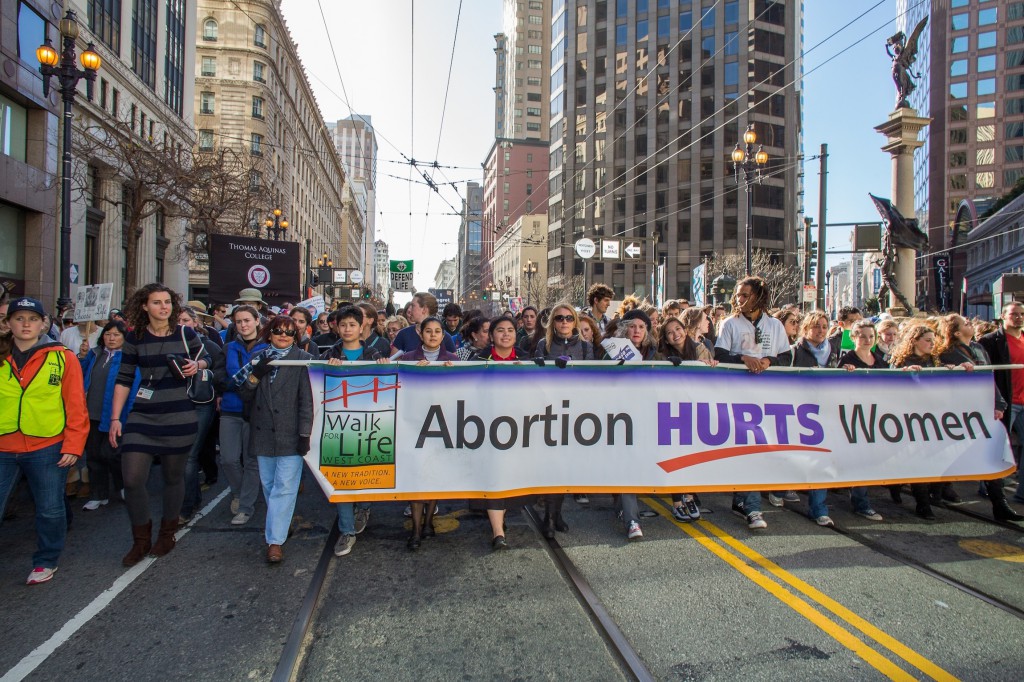
Participants at the annual March for Life in Washington on January 25 demonstrated just how determined they are, not only by showing up in such large numbers on a bitter, cold day, but by continuing a 40-year tradition of protesting the US Supreme Court’s decision legalising abortion.
“Forty years ago, people thought opposition” to the Supreme Court’s decision “would eventually disappear”, Boston Cardinal Sean O’Malley told the crowd assembled on the National Mall for a rally prior to the march along Constitution Avenue to the front of the US Supreme Court.
He noted that Nellie Gray, founder of the annual march who died last year, “was not going to allow that to happen”, nor was the pro-life movement.
“The march grows stronger every year,” said the Cardinal, chairman of the US Conference of Catholic Bishops Committee on Pro-Life Activities.
Various media outlets put the estimate for this year’s March for Life crowd at between 500,000 and 650,000. An official crowd estimate has not been provided by police since about 1995.
A separate “virtual” March for Life sponsored by Americans United for Life Action for those unable to travel to Washington drew 70,000 participants.
Many speakers praised the resiliency of the crowd, braving a minus 6-degree day and standing on snow-dusted ground, but they also spoke of the pro-life movement getting re-energised by young people who are becoming the movement’s new torchbearers.
This year’s march and rally took place three days after the anniversary of the Supreme Court’s Roe v Wade decision to better accommodate participants, since the official January 22 anniversary was the day after public ceremonies for the presidential inauguration.
Hundreds of high school and college groups were scattered throughout the rally crowd; their members, often in matching hats, were texting, taking pictures and creatively protesting by wearing pro-life stickers on their faces and carrying placards in the backs of their jackets.
Their placards did not have jarring images or messages but predominantly took a gentler tone such as: “Abolish Abortion Courageously” or “I am the pro-life generation”.
Jeanne Monahan, new president of the March for Life Education & Defence Fund, is 40 – just as old as the 1973 Supreme Court decision and the movement protesting it.
Monahan praised Gray for her long dedication to the cause and several speakers also credited her for getting the pro-life movement on its feet with the first march and leading each one until her death. During the rally, a video tribute to her was shown on the giant Jumbotron.
Monahan described abortion as “human rights abuse” but she also said there were signs the tide was changing as more anti-abortion measures have been introduced in US state legislatures and public opinions are changing. As she put it to the cheering crowd: “Being pro-life is considered the new normal”.
Speakers on the stage stood below the message “40=55 million”, referring to the number of abortions reported to have been performed since abortion was legalised. This year’s rally did not include speeches by dozens of politicians as in previous years. Nine legislators were announced and only a handful spoke.
Republican heavyweight John Boehner, who leads the Republican majority in the US House of Representatives, addressed the crowd with a taped video message promising to work for passage of a bill to ban taxpayer funding for abortions.
Rick Santorum, former senator and presidential candidate, spoke about his 4-year-old daughter, Bella, who suffers from Trisomy 18, a rare genetic disorder that is often considered fatal.
Santorum said babies diagnosed with disabilities in the womb are often aborted.
He and his wife were encouraged to abort their daughter, he said, because “she was going to be saddled with disabilities and it would be better for her. But we all know that death is never better”.
“She makes us better,” he said, referring to her impact on his family.
Santorum also praised the continual efforts of those in the pro-life movement, particularly those who volunteer at crisis pregnancy centres, stressing that this is “not a group moralising from the mountaintop”.
Another new aspect at this year’s rally was more use of social media technology, with speakers prior to the rally’s start urging participants to tweet about the rally and follow March for Life on Twitter and Facebook.
Cardinal O’Malley read a tweet to the crowd from Pope Benedict XVI, which said: “I join all those marching for life from afar, and pray that political leaders will protect the unborn and promote a culture of life”.
Rueben Verastigui, youth activist, had a specific message for the crowd’s youths.
“You can’t just sit around waiting for change to happen; you have to get up and make it happen.” He urged them to get involved in pro-life work and if they feel they are alone they should remember this experience.
“Look around, we are not alone. We are not the future of the pro-life movement; we are the pro-life movement!” – CNS